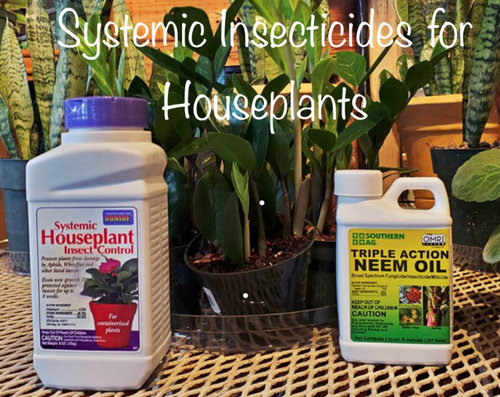Systemic Insecticide for Houseplants
Chrissy- zone6B/7A
3 years ago
Featured Answer
Sort by:Oldest
Comments (23)
gardengal48 (PNW Z8/9)
3 years agoFori
3 years agoRelated Professionals
San Juan Landscape Architects & Landscape Designers · Bell Gardens Landscape Contractors · Laguna Hills Landscape Contractors · Syracuse Roofing & Gutters · Mitchellville Landscape Architects & Landscape Designers · Siloam Springs Landscape Contractors · Tustin Landscape Contractors · Lakeland Landscape Contractors · Bound Brook Landscape Contractors · Holtsville Landscape Contractors · Middletown Landscape Contractors · New Brighton Landscape Contractors · North Highlands Landscape Contractors · Pikesville Landscape Contractors · Seminole Landscape ContractorsUser
3 years agolast modified: 3 years agokim1888
3 years agotapla (mid-Michigan, USDA z5b-6a)
3 years agoFori
3 years agotapla (mid-Michigan, USDA z5b-6a)
3 years agokim1888
3 years agohibiscus909
3 years agotapla (mid-Michigan, USDA z5b-6a)
3 years agotropicofcancer (6b SW-PA)
3 years agoEdie
3 years agolast modified: 3 years agotropicofcancer (6b SW-PA)
3 years agotapla (mid-Michigan, USDA z5b-6a)
2 years agoiochroma
2 years agotapla (mid-Michigan, USDA z5b-6a)
2 years agolast modified: 2 years agopopmama (Colorado, USDA z5)
2 years agotropicofcancer (6b SW-PA)
2 years agopopmama (Colorado, USDA z5)
2 years agotropicofcancer (6b SW-PA)
2 years agoRoseMe SD
2 years agogardengal48 (PNW Z8/9)
2 years ago
Related Stories

HOME TECHHello, It's Your Houseplant Calling
Or even tweeting. Today's apps and gadgets let plants communicate in better ways than with a show of withered leaves
Full Story
HOUSEPLANTSMeet a Long-Lasting Houseplant With a Forgiving Heart
Low light and little watering won't scar Zee Zee plant for life; this East Africa native has a tolerant nature and an exotic beauty
Full Story
HOUSEPLANTSThe Secret to Keeping Your Houseplants Happy and Healthy
Are you giving your plants the type of light they need? Find out which plants do best in different conditions
Full Story
HOUSEPLANTS10 Style-Boosting Design Ideas for Your Houseplant Collection
Nuts about houseplants? Check out these ways to make a bigger impact with your indoor potted displays
Full Story
HOUSEPLANTSThese Houseplants Love North-Facing Windows
Here are indoor plants that are happiest when they don’t get too much sunlight
Full Story
CONTAINER GARDENS5 Houseplants That Thrive in Full Sun
Place these sun lovers in south-facing windows
Full Story
HOUSEPLANTSOutsmart Winter — Make Houseplants of Your Garden Growers
No need to watch Jack Frost play Wreck the Rosemary. Bring your garden inside for the winter, using containers and these guidelines
Full Story
HOUSEPLANTSRetro Houseplants Get a New Look
The wild and crazy houseplants of the 1970s make a splash in today's interiors
Full Story
GARDENING 101How to Tell if Your Houseplant Needs Water
Keep your houseplants healthy by giving them the right amount of water
Full Story
HOUSEPLANTSHigh-Impact Houseplants for First-Timers
These easygoing houseplants will forgive and forget if you skip a weekly watering
Full Story








tapla (mid-Michigan, USDA z5b-6a)